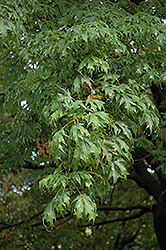Sweet Shadow Sugar Maple
Acer saccharum 'Sweet Shadow'
Height: 40 feet
Spread: 30 feet
Sunlight:
![]()
Hardiness Zone: 4
Other Names: Hard Maple, Rock Maple
Description:
An unusual shade tree that will get visitors talking, with deeply incised leaves giving a much more open and airy appearance than regular sugar maples; use as a specimen or accent in the landscape
Ornamental Features
Sweet Shadow Sugar Maple has attractive green deciduous foliage on a tree with a round habit of growth. The deeply cut lobed leaves are highly ornamental and turn outstanding shades of yellow and in the fall.
Landscape Attributes
Sweet Shadow Sugar Maple is an open deciduous tree with a more or less rounded form. Its relatively fine texture sets it apart from other landscape plants with less refined foliage.
This is a relatively low maintenance tree, and should only be pruned in summer after the leaves have fully developed, as it may 'bleed' sap if pruned in late winter or early spring. It has no significant negative characteristics.
Sweet Shadow Sugar Maple is recommended for the following landscape applications;
- Accent
- Shade
Planting & Growing
Sweet Shadow Sugar Maple will grow to be about 40 feet tall at maturity, with a spread of 30 feet. It has a high canopy with a typical clearance of 7 feet from the ground, and should not be planted underneath power lines. As it matures, the lower branches of this tree can be strategically removed to create a high enough canopy to support unobstructed human traffic underneath. It grows at a medium rate, and under ideal conditions can be expected to live for 80 years or more.
This tree should only be grown in full sunlight. It prefers to grow in average to moist conditions, and shouldn't be allowed to dry out. It is not particular as to soil pH, but grows best in rich soils. It is somewhat tolerant of urban pollution. This is a selection of a native North American species.

